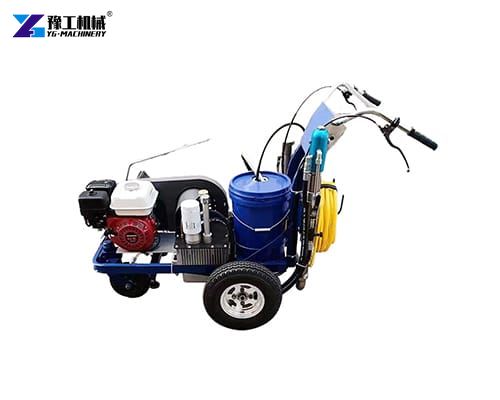Crack filling machine is a specialized piece of equipment designed to repair cracks in pavements, highways, and other surfaces. It is engineered to fill cracks in paved surfaces with hot or cold sealants, preventing water, debris, and other environmental elements from penetrating the substrate. By sealing these fissures, the machine helps extend the lifespan of the pavement, reduces the need for costly repairs, and enhances surface safety for vehicles and pedestrians. Road maintenance is a critical aspect of infrastructure development, ensuring safety, durability, and longevity of asphalt and concrete surfaces.
Applications of Crack Filling Machine
Crack sealing machines are indispensable across multiple sectors:
- Municipal Road Maintenance
Cities and towns rely on these machines to preserve asphalt roads, bike lanes, and pedestrian pathways, ensuring public safety. - Highway and Bridge Deck Repairs
State transportation departments use large-scale units to maintain high-traffic roads and bridge decks, preventing accidents caused by deteriorating surfaces. - Airport Runways and Taxiways
Airports require precision repairs to maintain smooth surfaces for aircraft, making crack filling machines a necessity.
Benefits of Using a Asphalt Crack Filling Equipment
- Cost Savings
Proactively sealing cracks prevents minor issues from escalating into major repairs. By avoiding potholes or pavement failure, organizations save on reconstruction costs. - Enhanced Safety
Cracks pose tripping hazards for pedestrians and can cause vehicle damage. Sealed surfaces improve traction and reduce accident risks. - Extended Pavement Lifespan
Regular maintenance with a crack filling machine can double or triple the life of asphalt or concrete surfaces, delaying expensive resurfacing projects.
Maintenance Tips for Asphalt Crack Filler Machine
Proper maintenance ensures optimal performance and longevity:
- Regular Cleaning: Flush the system after each use to prevent sealant buildup.
- Inspect Hoses and Nozzles: Replace worn parts to avoid leaks or uneven application.
- Check Fuel and Oil Levels: Ensure engines and pumps operate smoothly.
- Store Properly: Protect equipment from extreme temperatures and moisture.


